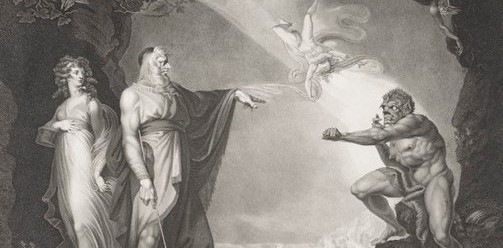Boydell's Vision: The Shakespeare Gallery in the Eighteenth Century


Boydell’s Vision: The Shakespeare Gallery in the Eighteenth Century was an exhibition held at Compton Verney between March and June 2016 to commemorate the 400th anniversary of Shakespeare's death. The exhibition was based on published research by Dr Rosie Dias on John Boydell’s Shakespeare Gallery and on late eighteenth-century exhibition culture. It complemented and provided important historical context for a parallel event at Compton Verney designed by Royal Shakespeare Company designer Stephen Brimson Lewis, Shakespeare in Art: Tempests, Tyrants and Tragedy, which offered an immersive and multi-sensory experience exploring the dramatisation of the emotions by artists, photographers and filmmakers who have engaged with Shakespeare's work. Focusing on the history of the Shakespeare Gallery which opened on Pall Mall, London in 1789, Boydell’s Vision explored two key themes. First, it used a selection of paintings and prints to reveal how Boydell’s commissions from artists such as James Northcote, Henry Fuseli and George Romney represented a rejection of Continental European academic traditions of painting in favour of aesthetic values which privileged national-cultural categories such as humour, ‘native’ genius, individuality and sensibility – and the centrality of Shakespeare to this cultural process. Secondly, Boydell’s Vision highlighted the significance of the Shakespeare Gallery’s role, not only in eighteenth-century “bardolatry”, but for modern exhibition and curation practices.
Drawing upon local collections, including those of the Royal Shakespeare Company and the Shakespeare Birthplace Trust, the exhibition highlighted the range of visual and material objects through which artistic and viewer / reader responses to Shakespeare were articulated in the late eighteenth century. It allowed these collections to situate their works within important narratives of British art and of cultural responses to Shakespeare. In conjunction with Shakespeare in Art: Tempests, Tyrants and Tragedies, Boydell's Vision allowed for a new kind of working relationship at Compton Verney that brought together theatrical design, and curatorial and academic expertise.
